Kagemusha (1980): the shadow of the warrior | la sombra del guerrero
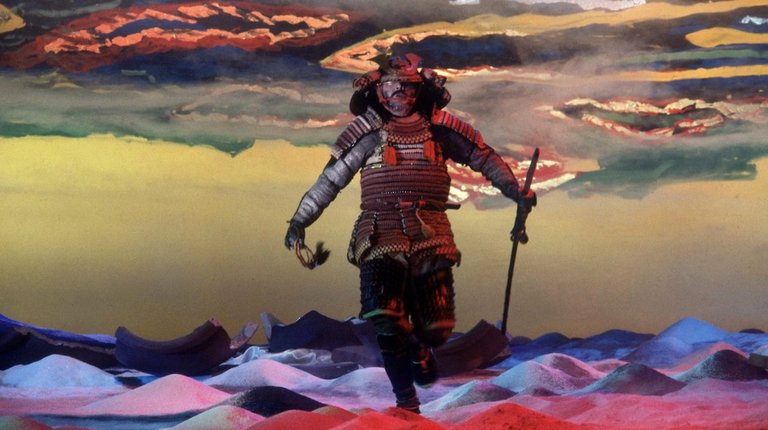
Uno de los tabajos más recordados de Akira Kurosawa
When talking about the best cinema of the 20th century, in addition to the typical names coming from Hollywood, there are always some foreign names (that is, from beyond the borders of the US and the UK) that appear again and again among the most prominent and celebrated directors in history, such as the Swedish Ingmar Bergman, the Russian Andréi Tarkovski and the Japanese Akira Kurosawa, who was always admired and recognized by other great directors such as Federico Fellini, Roman Polanski, Martin Scorsese and even Quentin Tarantino. In other words, if you are a cinephile or consider yourself one, you have to check out Akira Kurosawa's work.
Cuando se habla del mejor cine del siglo XX, además de los típicos nombres provenientes de Hollywood, siempre hay algunos nombres extranjeros (es decir, de más allá de las fronteras de los EEUU y el Reino Unido) que aparecen una y otra vez entre los directores más destacados y celebrados de la historia, como el caso del sueco Ingmar Bergman, el ruso Andréi Tarkovski y el japonés Akira Kurosawa, quien siempre fue admirado y reconocido por otros grandes directores como Federico Fellini, Roman Polanski, Martin Scorsese y hasta Quentin Tarantino. En otras palabras, si eres cinéfilo o te consideras como tal, tienes que revisar la obra de Akira Kurosawa.
Until recently I had only seen two of his most famous works, the iconic The Seven Samurais and the interesting and somewhat cryptic Rashomon, (adapted from two stories by the Japanese writer Ryunosuke Akutagawa), but Kurosawa's filmography is so extensive and so highly rated that it was difficult for me to choose what to see next until, ruling out other titles that I will see later, I opted for Kagemusha, written by the director himself together with Masato Ide. The story of the film is set in medieval feudal Japan, let's say between the 15th and 16th centuries. It's a time in which the great feudal lords fight among themselves for control of the territory, where there are dreams of unification through domination and in which the different houses, called clans, support one side or the other according to their interests and the possibilities of victory. In the middle of all this fight is Shingen Takeda, one of the most powerful warlords in the entire territory and who seems to be aimed at achieving the total conquest of the territory. But Shingen is dying and although his brother Nobukado has served as his double at times, he's not as much like him as a man that Nobukado himself has saved from a mortal sentence. This man will be the Kagemusha, a double who will serve as a political decoy.
Hasta hace poco yo sólo había visto dos de sus trabajos más famosos, la icónica The Seven Samurais y la interesante y algo críptica Rashomon, (adaptada a partir de dos relatos del escritor japonés Ryunosuke Akutagawa), pero la filmografía de Kurosawa es tan extensa y tan bien valorada que se me hizo difícil escoger qué ver a continuación hasta que, descartando otros títulos que veré luego, me decanté por Kagemusha, escrita por el propio director junto a Masato Ide. La historia de la película se ambienta en el Japón feudal del medioevo, digamos que entre los siglos XV y XVI. Es un tiempo en el que los grandes señores feudales luchan entre sí por el dominio del territorio, en donde hay sueños de unificación a través de la dominación y en el que las diferentes casas, llamados clanes, apoyan a uno u otro bando de acuerdo a sus intereses y a las posibilidades de victoria. En medio de toda esta lucha se encuentra Shingen Takeda, uno de los más poderosos señores de la guerra en todo el territorio y quién parece estar encaminado a lograr la conquista total del territorio. Pero Shingen está muriendo y aunque su hermano Nobukado le ha servido de doble algunas veces, no se le parece tanto como un hombre que el propio Nobukado ha salvado de una condena mortal. Este hombre será el Kagemusha, un doble que servirá como señuelo político.
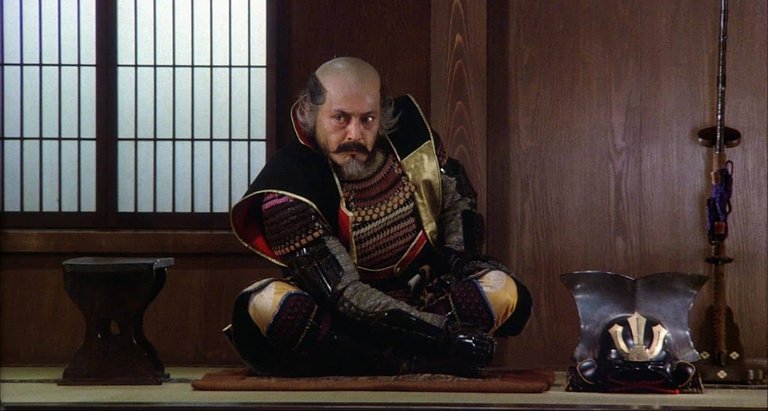
The plan is that when Shingen dies, the double can make public appearances to give the impression that the warlord is still alive. The problem is that the double does not have the noble origin of Shingen, he doesn't speak or behave like him and that in order to carry out the plan, the generals of his army must deceive even their own men by keeping the secret. And then everything gets even more complicated when a sniper mortally wounds Shingen and the theater has to be put together ahead of schedule.
El plan es que, cuando Shingen muera, el doble puede hacer apariciones en público para dar la imagen de que el señor de la guerra aún vive. El problema es que el doble no tiene el origen noble de Shingen, no habla ni se comporta como él y que para poder llevar a cabo el plan los generales de su ejército deben engañar incluso a sus propios hombres manteniendo el secreto. Y luego, todo se complica aún más cuando un francotirador hiere mortalmente a Shingen y el teatro debe ser montado antes de lo previsto.
From there, several narrative lines are unleashed that become intertwined. On the one hand there is war, the battle scenes in which some clans confront others, invade castles, gallop aboard their horses and raise the flags of the different houses; On the other hand, there are the plans of the generals of the Takeda clan and the brother of the deceased Shingen, who wish to continue the war by pretending that Shingen is still alive; furthermore, there are also the suspicions of his enemies, who saw Shingen wounded and then see him reappear on the battlefield, but whose tactical decisions confuse them because, militarily, the actions of his army seem to suggest that he was another man; and finally the drama of the double himself who, although he has managed to survive, must now pass himself off as a feudal lord, born noble, share the palace with the servants and pretend that he's a man that he's not. Little by little, the double will feel a certain loyalty towards that clan that saved his life, even if it had done so for its own interests, and when an unexpected event reveals his true identity, he will still have the opportunity to redeem himself or try to die for something more than having been a common thief. There are many things that happen in this film, which is around 180 minutes long, but it's entertaining at all times.
A patir de allí se desatan varias líneas narrativas que se van entremezclando. Por un lado está la guerra, las escenas de batalla en la que unos clanes se enfrentan a otros, invaden castillos, galopan a bordo de sus caballos y enarbolan las banderas de las diferentes casas; por otro lado están los planes de los generales del clan Takeda y del hermano del fallecido Shingen, quienes desean continuar la guerra pretendiendo que aquel sigue vivo; además, también están las sospechas de sus enemigos, quienes vieron a Shingen herido y luego lo ven reaparecer en el campo de batalla, pero cuyas decisiones tácticas los confunden porque, militarmente, las acciones de su ejército parecen sugerir que fuera otro hombre; y por último el drama del propio doble que si bien ha logrado sobrevivir, ahora debe hacerse pasar por un señor feudal, nacido noble, compartir el palacio con la servidumbre y fingir que es un hombre que no es. Poco a poco, el doble irá sintiendo cierta lealtad hacia ese clan que le salvó la vida, aunque lo hubiera hecho por intereses propios, y cuando un evento inesperado deja al descubierto su verdadera identidad, aún tendrá la oportunidad de redimirse o de intentar morir por algo más que por haber sido un ladrón común. Son muchas las cosas que ocurren en esta película que tiene alrededor de 180 minutos de duración, pero resulta entretenida en todo momento.
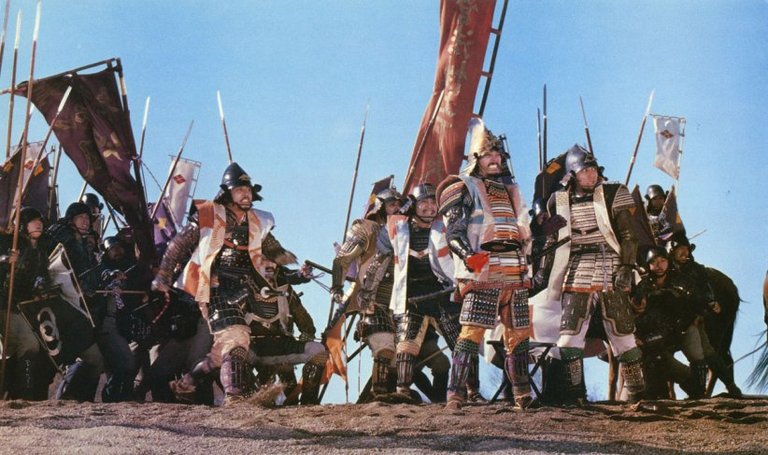
As a story, Kagemusha is a mixture of many things. It's an epic story, a war drama, and although it's an original story by its Japanese director, echoes of Western literature are perceived. The double is a theme of Dostoevsky, certain passages of the plot are reminiscent of Shakespeare and obviously the theme of the exchange of identities between a poor and another rich man makes us think of Mark Twain and what is probably the most reproduced, plagiarized and adapted work from the story, The Prince and the Pauper.
Como historia, Kagemusha es la mezcla de muchas cosas. Es una historia épica, un drama bélico, y aunque es una historia original de su director japonés, se perciben ecos de la literatura occidental. El doble es un tema de Dostoievski, ciertos pasajes de la trama recuerdan a Shakespeare y obviamente el tema del intercambio de identidades entre un hombre pobre y otro rico nos hacen pensar en Mark Twain y la que es probablemente la obra más reproducida, plagiada y adaptada de la historia, El príncipe y el mendigo.
If we combine these elements with medieval Japan, Akira Kurosawa's direction, very well-executed photography and a fluid narrative, we obtain an excellent war film that fans of The Last Samurai may like as much as readers of Macbeth. Due to lack of resources, Kurosawa had to seek the support of a production company to help him finance the film and none other than Francis Ford Coppola, George Lucas and 20th Century Fox appeared. That is an indication of what a good director his contemporaries considered him (and not just any director, we are talking about the directors of The Godfather and Star Wars) and explains why the result was so recognized, winning the Palme d'Or in Cannes, a César, two BAFTA awards, two Donatellos and nominations for the Oscars and the Golden Globes. In the midst of a filmography that includes Ran, Throne of Blood, Ikiru, Dreams, Roshomon, The Seven Samurais, Yojimbo and many other titles, perhaps Kagemusha goes a little unnoticed, but its cinematographic quality deserves that this title be rescued from the shadows and shared with lovers of war cinema, Japanese cinema, or those who want to know something about the work of Akira Kurosawa, one of the most important and influential directors in the history of cinema, have any of you seen this film? Do you know anything about Kurosawa's work? I read you in the comments.
Si unimos esos elementos con el Japón de la edad media, la dirección de Akira Kurosawa, una fotografía muy bien ejecutada y una narrativa fluida, obtenemos una excelente película de guerra que puede gustar a los fanáticos de El último samurai tanto como a los lectores de Macbeth. Por tema de escasez de recursos, Kurosawa debió buscar el apoyo de alguna productora que lo ayudara a financiar la película y aparecieron nada más y nada menos que Francis Ford Coppola, George Lucas y la 20th Century Fox. Eso es un indicio de lo buen director que lo consideraban sus contemporáneos (y no cualquier director, estamos hablando de los directores de The Godfather y Star Wars) y explica el por qué el resultado fue tan reconocido, llegando a obtener la Palma de Oro en Cannes, un César, dos premios BAFTA, dos Donatellos y nominaciones a los Oscar y los Globos de Oro. En medio de una filmografía en la que destacan Ran, Throne of Blood, Ikiru, Dreams, Roshomon, The Seven Samurais, Yojimbo y muchos otros títulos, puede que Kagemusha pase un poco desapercibida, pero su calidad cinematográfica merece que este título sea rescatado de las sombras y compartido con los amantes del cine bélico, del cine japonés, o de quienes quieran conocer algo del trabajo de Akira Kurosawa, uno de los directores más importantes e influyentes de la historia del cine, ¿alguno de ustedes ha visto esta película? ¿conocen algo del trabajo de Kurosawa? Los leo en los comentarios.
Reseñado por @cristiancaicedo
Other posts that may interest you | Otros posts que pueden interesarte:
 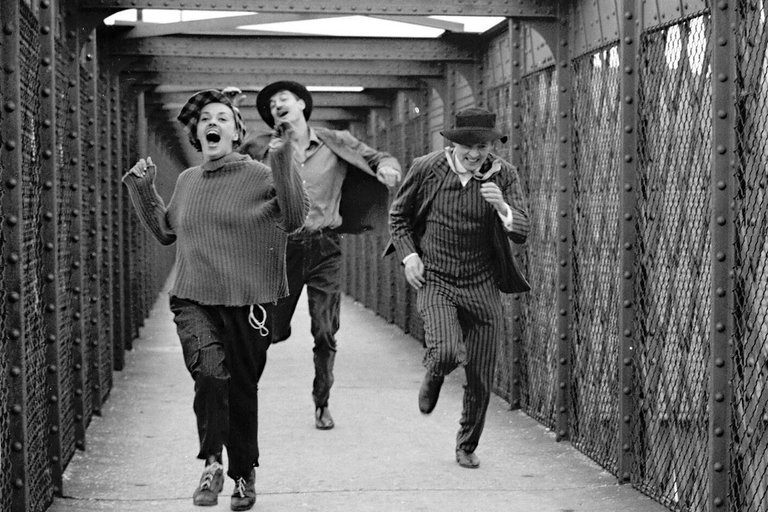 |
|---|

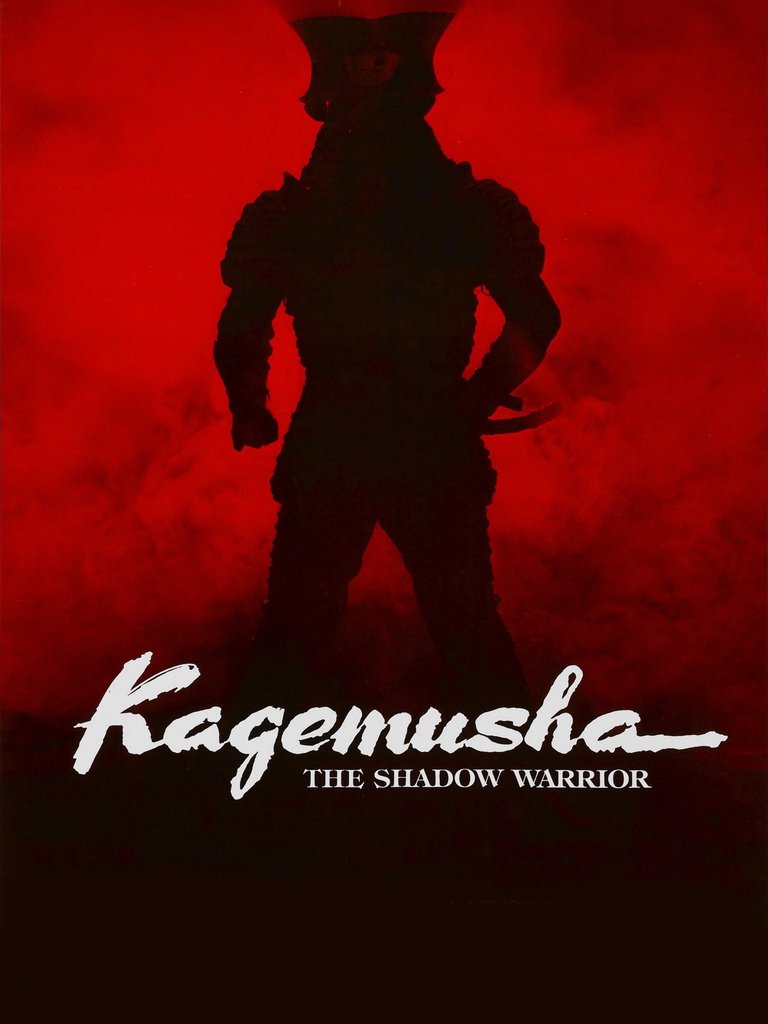


Amo las películas que transcurren en el Japón antiguo, tengo que verla, excelente reseña
Entonces esta te va a gustar mucho. Saludos y gracias por leerme.
Magnífica tu reseña de esa obra señera de Kurosawa, en la que destaca la excelente fotografía (muy plástica) y los movimientos de cámara, así como el tratamiento de los entresijos del poder y la cuestión del doble. Saludos, @cristiancaicedo.
Muchas gracias por el apoyo. Saludos.
☕️ Hello @! Your post has been recognized by the cXc Music team!
Experience our music map at cXc.world 🔗🌳. Peep plans 👀 in our DHF proposal 👉